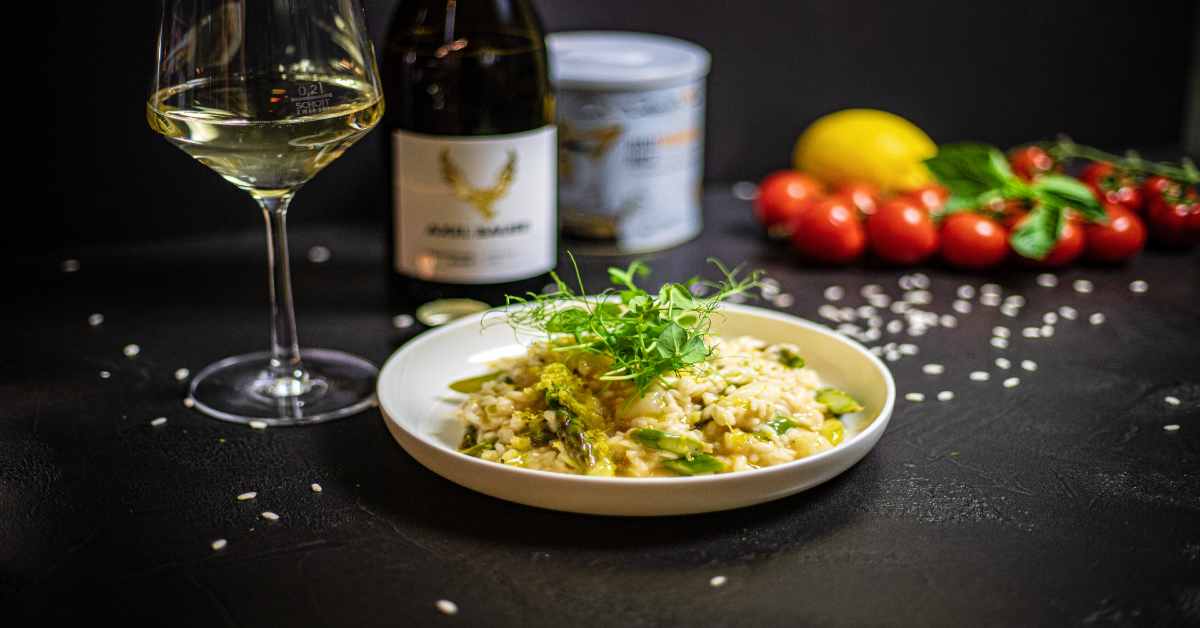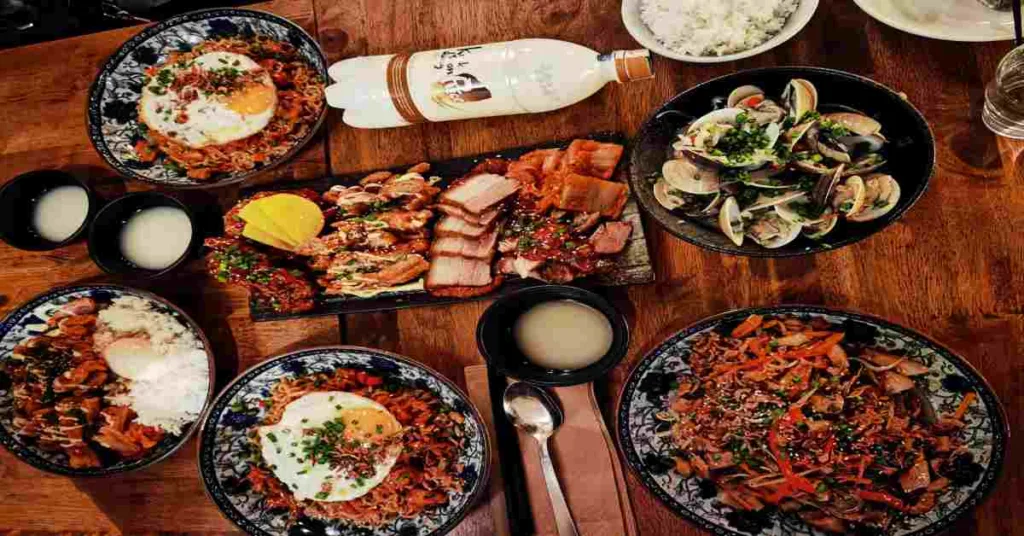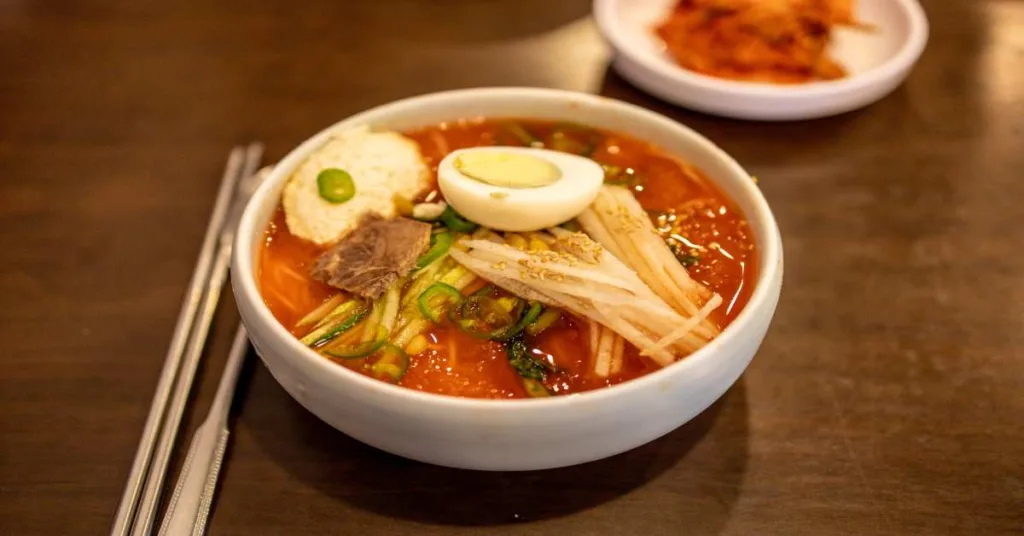Risotto is a staple of Northern Italian cuisine and was introduced to Italy in the Middle Ages as the Mediterranean climate favored the cultivation of short-grain rice. Commune, Semifino, Fino, Superfino. Superfine is the longest of the four and most commonly used for risotto. Arborio rice, the Superfino rice variety, is most commonly used outside Italy, while Carnaroli, Vialone Nano, and Baldo are the common varieties used to prepare this typical Italian dish.
What is Risotto?
Risotto is also defined as a northern Italian rice dish that is boiled in broth and stirred until creamy. At its most classic and introductory level, risotto is simple. It’s a soup topped with butter, onions, perhaps wine, short- or medium-grain rice, and Parmesan cheese. Elegant rather than complex.
The rice used for the risotto should be semi-circular, round-grain Italian rice. It’s the perfect slow-cooking property, where the grains slowly absorb the flavors of the liquid and release the starch, creating a classic silky-smooth texture. Risotto rice is then divided into four categories according to grain length.
The adaptability and technique of cooking are further divided into hundreds of variations, and many of the most popular versions of the dish are being compiled in an Italian recipe book entitled Pasta Perfection.
RISOTTO’S HISTORY
Rice was being introduced to Sicily and Spain by the Arabs in the 14th century. Rice cultivation continued in Naples and eventually spread into northern Italy via the swamps of the Po Valley. The humid Mediterranean climate favored the cultivation of short and medium-grain rice. Profits from this new commodity boosted the city-states and elites of Milan, Venice, and Genoa. It increased risotto’s popularity in the area when coupled with the infusion of Eastern flavors. Until the 18th century, cooked rice was then utilized as an ingredient in risotto. The version of the recipe that most closely resembles what we eat in the 21st century was first published in 1829. In it, the rice was further toasted with butter and onions, and the broth was being added little by little, stirring constantly until it was creamy and thick.
Precautions to take before cooking
The most important thing to remember when cooking Italian risotto is not to pre-wash the rice. This leaves the grains with natural starches that absorb the broth, making it thick and creamy. It also helps that it is very easy to prepare. The broth supplied should always be heated in the same manner. Simply add additional hot water if you run out of prepared broth and need to add more liquid toward the finish.
Risotto Recipe
Risotto recipe Ingredients
- Arborio rice,
- Unsalted butter,
- white wine (not sparkling!
- pints of vegetable or meat broth (or stock if you don’t have the time to make this in advance)
- onion
- uncut garlic clove
- Oregano, chopped, in two tablespoons.
- To taste with salt & pepper
- parmesan cheese (optional)
- Bel Paese cheese,
Initially, make your broth(vegetable broth)
- extra virgin olive oil, a tablespoon
- onion
- two carrots (medium-large)
- a single celery stick
- selection of herbs (parsley, oregano, thyme)
- Pepper and salt
Part 1
First, heat the oil in a large pan. Then chop the vegetables and put them in a pot with 2 liters of water. Add herbs, salt and pepper, bring to a boil, and simmer for 30 minutes or until the water has absorbed its full flavor.Pour into a colander, discard the vegetables, and you’re left with a delicious broth.
Part 2
After that, prepare the risotto.
- Start with the ‘soffrito’, melt the butter in a pan with the finely chopped onion and sauté for about 5 minutes or until golden brown
- Then blend the arborio rice and mix well until coated with butter. Fry for 2-3 minutes.
- Once the rice and white wine have blended, add the white wine.
- Then pour 1/2 pint of broth into the pot and bring to a boil. Reduce heat and simmer so the rice can absorb the liquid. During this time you need to stir frequently
- Continue adding broth, 1/2 pint at a time. Repeat the process of mixing each time to ensure the liquid is fully absorbed, then (and only then) add more. If you add the dashi stock all at once, it will be difficult to absorb it. So remember patience is the key here. After all, Rome wasn’t built in a day!
- After about 20 minutes, this process will be complete and the rice will be creamy and al dente.
- The next part is being called “mantecatura”. Remove risotto from the heat and stir in 1 tablespoon butter. This is what sets Italian risotto apart and gives it a creamy texture.
- Finish with oregano and salt and pepper to taste, and serve with a fresh salad and/or red wine.
Tips
- Make sure the broth or broth you use is being heated. Adding cold liquid to the risotto during cooking slows down the cooking process and can ‘shock’ the rice so that it doesn’t absorb the liquid. add one by one.
- Stirring is necessary to release the starch from the rice, thicken the liquid and make the risotto very creamy. The classic recipe adds butter at the end of cooking to add richness, but you can skip this step if you want to reduce the fat in your meal.
- Freshly grated Parmesan cheese is a must. Don’t even think about using pre-seasoned cheeses, especially those that come in green tins. For the best risotto flavor and texture, you should use the original.
What kind of rice are suitable for Risotto?
The best and most popular rice for making risotto are Arborio (easy to find), Carnaroli, and Vialone Nano. These types of rice are rich in starch, which allows them to absorb liquids and hold their shape better.
Risotto varieties
There are many ways to make risotto. With chicken broth, parmesan cheese, and white wine, this essential recipe can be a flavorful accompaniment to dishes like fish, chicken, and meat. You can add peas, shrimp, pumpkin, peppers, spinach, and ham.
Benefits of Risotto for Health
The main ingredient of risotto is rice. The significant health benefits of eating plain risotto stem from the health benefits of rice. Several studies have shown that rice-based diets may provide certain benefits. Most of these reviews, however, are about Asia, where rice is not commonly paired with foods such as cream and cheese. However, here are some of the benefits risotto offers:
- May Improve Bone Health
- Maintains Brain Health
- May Combat Cell Damage
How Nutritious is risotto?
A bowl of Arborio rice can provide just 170 calories. Harvested in Italy, Arborio rice is then packed with good quality and nutritious properties. It may have a slightly higher starch content than other long-grain white rice. However, it doesn’t have as many carbs and is healthier than regular rice. It is a food rich in various nutrients because it can contain multiple ingredients such as soup, rice, vegetables, spices, seafood, peas, etc. The nutrients in risotto include calories, sodium, carbohydrates, fiber, sugar, and protein.
What to serve with Risotto?
Risotto recipes come in a variety of flavors and preparations. Roasted pumpkin and spinach risotto, leftover risotto arancini, and creamy fried rice served with risotto. Paella is a rice pudding similar to risotto, cooked with Arborio rice, chicken, and asparagus risotto with spices and milk. Risotto is being used to prepare many other dishes such as soups, poached eggs, beans, salads, and mushroom curries.


